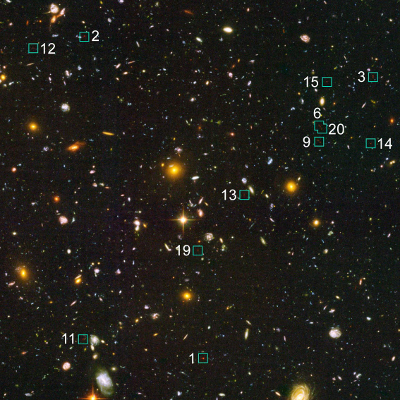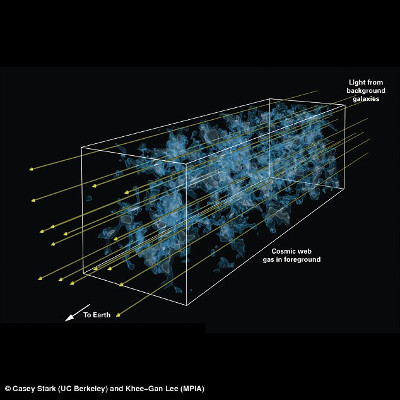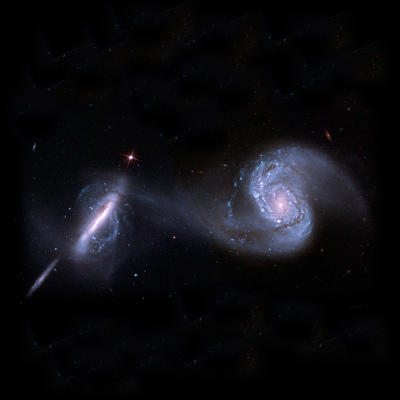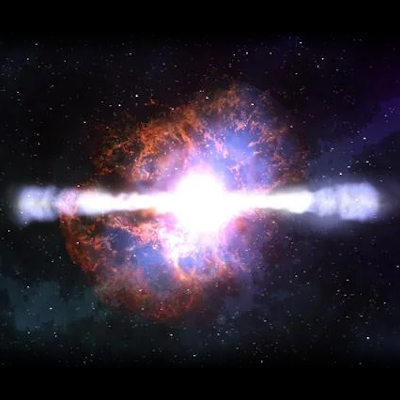|
The Extremely Large Telescope (ELT), i.e., ESO's future 39 meter telescope, will probably be the most ambitious ground-based optical astronomical facility of the century. Its main scientific objectives are the detection and study of the formation of the very first structures in the early Universe, 10-13 billion years ago, and obtaining the very first images of super exo-Earths and more generally the systematic characterization of extrasolar planets and their formation process. The ELT is particularly innovative since it proposes for the first time to integrate the concept of adaptive optics directly within the telescope (Ground Layer Adaptive Optics, GLAO), which will provide uniform image quality and reduce the dependence of the observations to atmospheric conditions. Its great collecting power will reach sensitivities unmatched by any competing american ELT project. It will provide european astronomers with the most ambitious optical astronomical observation tool and the most powerful telescope ever built. | ||
A fundamental prediction of cosmological models is that structures evolved "hierarchically" by successive mergers of more and more massive objects from the Big Bang to the galaxies we see around us today. Questions such as what seeded the growth of the first primordial galaxies and the history of galaxies like our own Milky Way remain unclear - only the ELT can bring the answers within our reach.
A major challenge is awaiting astronomers: the Universe contains hundreds of billions of galaxies, each of which consists of hundreds of billions of stars! Surveying these systems efficiently calls for a multi-object spectrograph (MOS) know as ELT-MOS as soon as possible after first light of the ELT in 2024.
The international MOSAIC Consortium is gathering together efforts across Europe and beyond to build this ELT survey machine. It includes major players in instrument development and conception, which built a number of effective and scientifically productive instruments for the VLT (FLAMES, KMOS, NACO, X-SHOOTER).
The most prominent objective of MOSAIC will be to conduct the first exhaustive inventory of matter in the distant Universe. This will lift the veil on how matter is distributed in and between distant galaxies, by accounting for all kinds of regular matter, comprising stars and different phases of gas, as well as so-called dark matter. | ||
The MOSAIC design has also been driven by 6 core science cases (below), but with its design also strongly influenced by other cases developed by the community in the MOS White Paper to ensure we are as ready as possible for the exciting discoveries awaiting in the late 2020s.
MOSAIC will give a tremendous leap forward in our understanding of how present-day galaxies formed and evolved. This includes detecting nearby primordial stars, the very first galaxies at the epoch of re-ionization, the most exhaustive dynamical survey of distant galaxies ever undertaken, and detailed study of stars in galaxies millions of light years beyond the Milky Way.
 Click here to list the MOSAIC science team.
Click here to list the MOSAIC science team.
Science cases
|
A massive work was initiated in 2011 to establish the scientific cases (hereafter, SCs) that are driving the design of a MOS on the ELT. Going from the largest to the smallest spatial scales :

MOSAIC will detect and study the very first galaxies. Their light, which has taken more than 13 billion years to reach us, will provide us with vital clues to our understanding of the early epoch when the Universe was ‘reionised’, during which its gas changed from a universally neutral into an ionised state. First light
Mosaic will combine both visible and near-IR observations to conduct the first direct inventory of matter in distant galaxies at z~3, including characterising the dark matter profiles in disk galaxies, the distribution of neutral gas in the IGM, and probing all gas phases in the CGM. Inventory of matter
A large (hundreds to thousands of galaxies) and representative survey of spatially-resolved galaxies selected homogeneously over the redshift range z=2-4 is an important scientific goal for the ELT. This will probe the mass assembly of galaxies by disentangling the different physical processes at work as a function of time and mass (Puech et al. 2010; 2018). When combined with deep imaging in the rest-frame near-IR from, e.g., the JWST, the evolution of their dynamical state as a function of time and mass can be investigated. Amongst the whole mass spectrum, low mass galaxies represent a unique niche for the large integrated area of the ELT. Mass assembly of galaxies through cosmic time

Observations of resolved stellar populations with MOSAIC will enable us to trace and explore the star-formation and chemical-enrichment histories of large samples of galaxies. With current facilities, detailed spectroscopic observations of individual stars are limited to the Milky Way and its nearest neighbours, but reaching beyond the Local Group is essential in order to advance our understanding of how galaxies form and evolve under very different environmental conditions. MOSAIC will allow us, for the first time, to move to a broader range of galaxies in the Local Volume, from the edge of the Local Group out to Mpc distances, and to reach the faintest populations within the Milky Way. Resolved stellar populations beyond the Local Group
Observations of resolved stellar populations with MOSAIC will enable us to trace and explore the star-formation and chemical-enrichment histories of large samples of galaxies. With current facilities, detailed spectroscopic observations of individual stars are limited to the Milky Way and its nearest neighbours, but reaching beyond the Local Group is essential in order to advance our understanding of how galaxies form and evolve under very different environmental conditions. MOSAIC will allow us, for the first time, to move to a broader range of galaxies in the Local Volume, from the edge of the Local Group out to Mpc distances, and to reach the faintest populations within the Milky Way. Galaxy archaeology
The goal of this working group is to define the science cases, key questions and observing strategies for using MOSAIC in these rapidly growing domains. Time-Domain, Transients and Multi-Messenger Astrophysics | ||
